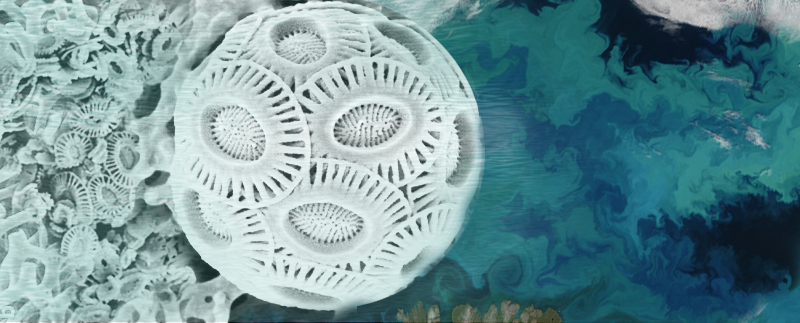
Carbon Explorers measure the concentration of carbon at depths down to a kilometer, including particulate inorganic carbon (PIC) such as the shells of coccolithophores, one-celled plants armored in calcium carnonate. Visible from satellites as milky blooms covering hundreds of miles of ocean, the onset and dissipation of coccolithophore blooms has yet to be observed in detail. Carbon Explorers are designed to fill such gaps in our knowledge of marine biology.
Somewhere between tossing Jonah overboard and hanging that albatross around the Ancient Mariner’s neck, sailors acquired a reputation for superstition. It takes a clear-headed oceanographer to resist joining them, especially after a string of bad luck at sea involving the number 13.
Jim Bishop of Berkeley Lab’s Earth Sciences Division (ESD), a professor in UC Berkeley’s Department of Earth and Planetary Science, developed Carbon Explorers (CEs) to drift with ocean currents, descend as deep as a kilometer to record particulate carbon, then return to the surface at programmed intervals and report via satellite.
Carbon Explorers have scored notable successes in understanding the ocean’s carbon cycle. CEs 1 and 2 were deployed in the North Pacific in 2001 and recorded a plankton bloom fertilized by an iron-rich dust storm from the Gobi Desert, a long-theorized process never before directly measured. In 2002, CEs were part of the Southern Ocean Iron Experiment, providing the first direct evidence of artificial iron fertilization; two Explorers continued reporting another year, one wintering under the Antarctic ice shelf. Other Explorers brought valuable data from the Atlantic and elsewhere in the Pacific.
In 2004, as Bishop launched a Carbon Explorer in Hawaiian waters from the RV Kilo Moana, it crashed into one of the ship’s twin hulls and sank. “Never allow the principal investigator to do real work,” Bishop later remarked. Yes, it was CE 13.

Todd Wood (left) and Jim Bishop with a Carbon Explorer. Particles in the water flow through the PIC sensor’s open channel as the Explorer drifts with the current. Polarizing filters, one near the source of the laser beam and the other over the detector, together block all light except what calcium carbonate refracts. Calcium carbonate twists transmitted light, allowing it to pass through the second filter to be recorded on the detector. (Photo Alex Derr)
CEs are based on SOLO floats pioneered by the Scripps Institution of Oceanography. Working with Scripps, WETLabs Inc. of Portland, and Berkeley Lab’s Engineering Division, Bishop and ESD’s Todd Wood and their colleagues spent the next years developing a new class of floats called Carbon FLUX Explorers, meanwhile reworking the original Carbon Explorers’ particulate inorganic carbon (PIC) sensors.
PIC sensors count plankton shells and other calcium carbonate (CaCO3) debris ten times a second. As a polarized laser beam passes through the debris, the unusual refraction of CaCO3 gives the light a twist, allowing it to slip through a second polarizing filter that blocks other light. The detector records only inorganic carbon particles.
The RV New Horizon tested CEs 14 and 15, fitted with modified PIC sensors, off the California coast in January 2013. CE 15 – originally given the number 13, but later reshuffled – failed to resurface. But as the ship was leaving for home port after a wait of many hours, CE 15 popped up and was hauled aboard with sighs of relief.
“We discovered that the float’s clock read January 2000, 13 years earlier than its intended setting,” says Bishop. “It might have gone nowhere, but luckily another part of its software, tracking the time of day, brought it to the surface to report” – in the nick of time.
Todd Wood rushed north with both floats, their PIC sensors working and their clocks reset, in time to board the Canadian research vessel John P. Tully. In February both were relaunched at the same station as the original Carbon Explorers and are reporting daily from the North Pacific.
More on Carbon Explorers and Carbon Flux Explorers is at http://newscenter.lbl.gov/feature-stories/2011/08/01/carbon-explorer-storm/.